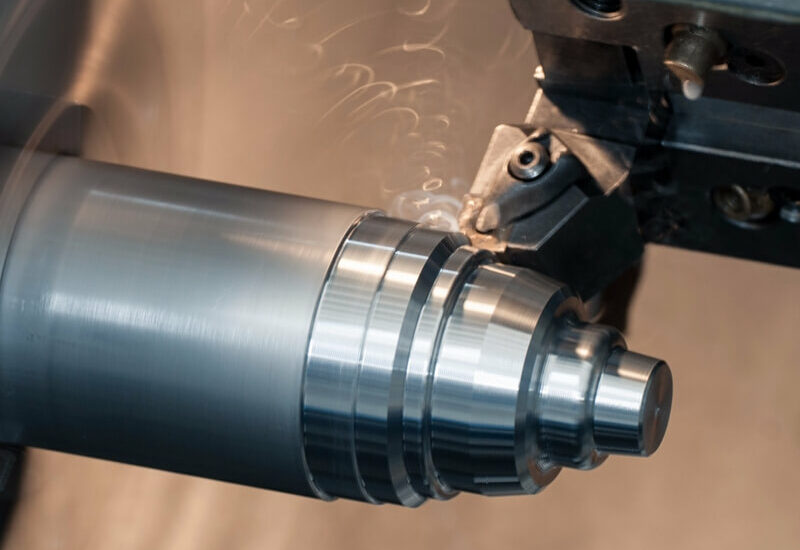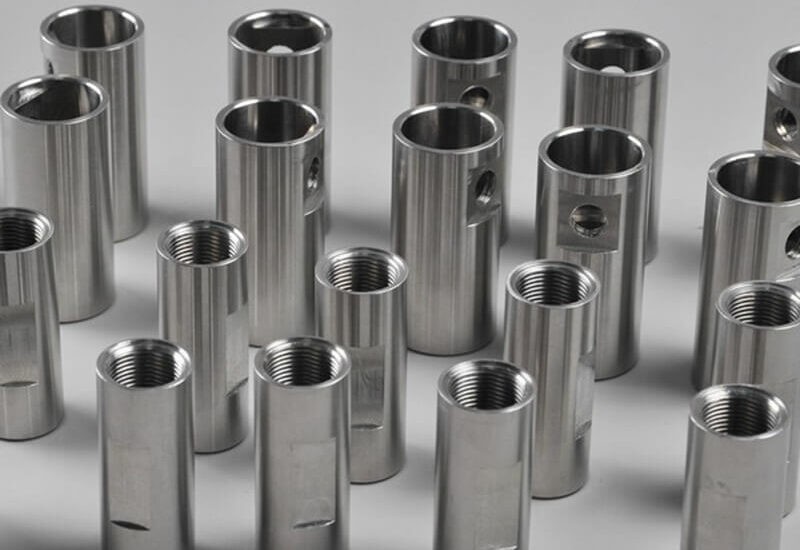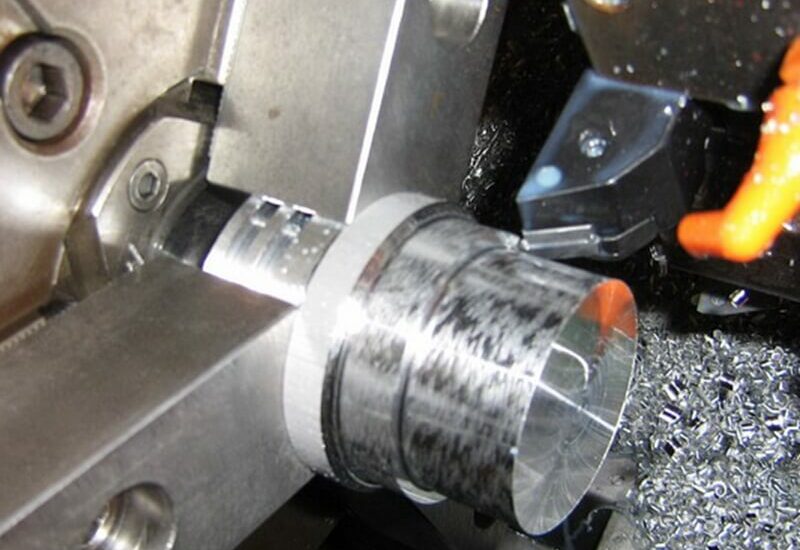CNC turning is an advanced manufacturing process in which material is removed from a rotating workpiece that is held on a chuck of CNC lathe by using a cutting tool. In simple terms, the main machine tools used in this process are the cutting tool that is mounted on a turret and the rotating spindle in which the workpiece is held firmly without any vibration. Sometimes CNC turning is referred as “subtraction machining” since it involves the removal of material from a workpiece to achieve a desired shape. CNC turning is an advance method for cutting (shaping)materials into our required custom product as it is aided by software that automatically calculates and analyzes the raw workpiece to convert it into desired structure.
Advantages of Using CNC Turning Process
Now, let’s discuss some benefits of using this advance turning process. CNC turning is basically used for shaping the material into round cylindrical parts but can be used effectively for other processes as well due to low probability of material fracture and product malfunction. Today, most industries offer CNC turning services, as this process is highly automated and implemented through computerized controlled tools.
§ Precision in shaping cylindrical surfaces
CNC turning is highly demanding when cutting workpieces into cylindrical parts as it provides low chance of errors. With accurate cutting tools and computer aided controls the possible chance of run outs is eliminated.
§ Cost-Effective
One of the advantages of using CNC turning is that it’s cost-effective meanwhile it provides high precision and accuracy. This means many industries can adapt to this process for their production including both low and high-volume production units. Many new industries in the market also implement the use of CNC turning for their part production as it doesn’t cost that much.
§ Highly automated process
CNC turning is a highly advanced turning process as it reduces labor and saves time while producing efficient products. The CNC technology has rapidly advanced in recent years, it has made tough processing into easier tasks such as manufacturing and fabrication of different products, components and tools that are made out of metals, plastics, and in some cases even wood is used. It also offers some other benefits as well such as enhanced production efficiency, cost effectiveness, and reliable industrial processes.
§ Increased Material Compatibility
With CNC turning methods, we can implement the use of a wide range of metals and plastics components for our part production. For example, metals include brass, aluminum, steel, magnesium alloy, titanium alloy, copper, as well as many different kinds of plastics. Many products are designed with a variety of materials which increases the product quantity and can fulfill local and international market needs.
§ Multi-tasking Efficiency
Some advance CNC turning operations that are carried using CNC lathes and CNC turning centers are capable of multi-tasking which make them highly essential for step machining operations and other machining processes. Also, due to their cost effectiveness, they are being used in masses in various low and high-volume production units as they save time and labor at the same level. CNC turning operations can be implemented due to the multitasking capabilities with increased product quality and quantity as many workpieces are being machined simultaneously from single prototypes to mass production.
§ Increased Production Rate
CNC turning operations have the capability of mass production in industrial sectors. Due to its multi-tasking and computer-aided controls, these operations can machine materials at a great speed with enhanced product quality and quantity.
Some Advance types of CNC Turning operations
CNC turning operation includes a wide range of processes in which many cylindrical surfaces can be machined such as taper turning, parting, internal and external turning, drilling, boring, grooving, reaming, knurling, parting, facing, threading etc. Due to such versatile operations of CNC turning, CNC turning services are utilized in several small and large industrial sectors.
§ Facing
It is the CNC turning process, in which the cutting tool (cuts the workpiece) is moved at right angles to the axis of rotation of the workpiece. It is one of the most basic operation in CNC turning and can be performed when the material (workpiece) is held between jaws of CNC lathe while the cutting tool (high steel) cuts the material perpendicular to rotational axis of the rotating workpiece.
§ Parting
It is a simple operation in which we reduce the length of the workpiece by cutting the workpiece along the diameter and perpendicular to the rotational axis. It is performed to remove a whole component from the workpiece in order to decrease its length.
§ Grooving
This CNC turning operation is similar to parting, except the grooves are carved to a specific depth instead of cutting the components of the workpiece. Grooving can be done on the internal and external surfaces of the material. We can use grooving inserts for making grooves on the surface of workpiece.
§ Boring
Boring is the operation in which we enlarge a hole that is already been drilled by means of a single-point cutting tool, for instance a gun barrel can be used to increase the diameter of the workpiece. This CNC turning operation is simply done to achieve higher accuracy of the diameter of a hole.
§ Drilling
Drilling is the process in which material is removed from the inside of the workpiece by using tool known as drill bit. This CNC turning process requires standard drill bit size held tightly in tailstock or simple turret tool of CNC lathe machine.
§ Reaming
It is resizing operation that is done by removing a small amount of metal from a hole which is drilled already. It is done for casting internal holes with precise diameters. For instance, a 4mm hole is drilled by using a drill bit and then resized to accurate dimensions by using a reamer tool.
§ Taper Turning
In this CNC turning operation we intend to produce a conical outlook by slow decrease or increase in diameter of the spherical workpiece. This CNC operation has a wide range of applications in the manufacture of machines. All machine spindles have taper holes in which different kinds of tools are inserted for specific purpose.
Conclusion
In this modern era, CNC machining technology will change the scope of manufacturing of products in the large and small industrial sectors. The computer-assisted designs with computer-aided robotics controls may prove to be essential for low volume production companies to improve production rates and stay in the competition.









